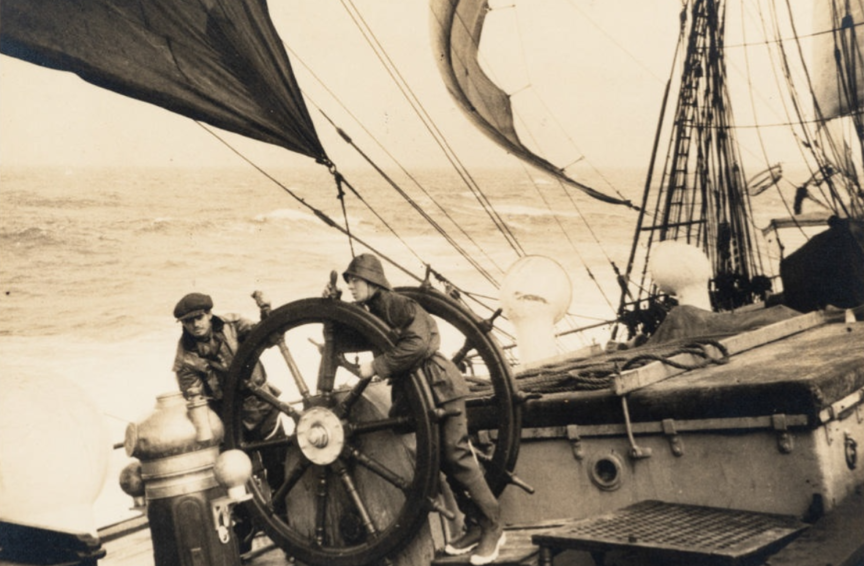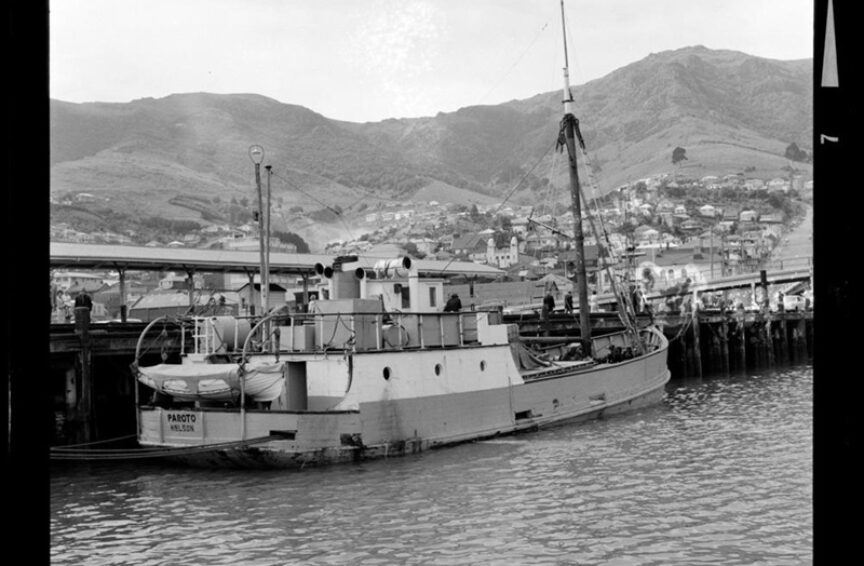PO Box 95
Lyttelton 8841
Te Ūaka recognises Te Hapū o Ngāti Wheke as Mana Whenua and Mana Moana for Te Whakaraupō / Lyttelton Harbour.
The “Pamir”, the last ‘Barque From The North’
The Pamir was a four masted, steel hulled 3,020 tonne barque, built in 1905 at the Blohm and Voss shipyards in Hamburg for shipping company F. Laeisz. One of ten sister ships in their Flying-P Liner class, she was 114.5 m long with a 14 m beam and a draught of 7.25 m. Her early career as a merchant sailing ship entailed eight journeys carrying nitrate from Chile to Germany. With an average cruising speed of 8-9 knots she could achieve a commendable 16 knots in the right conditions.
Post WWI the Pamir was taken as war reparation by Italy in 1920; in 1924 her original company bought her back and she returned to service in the nitrate trade. During WWII, she was seized as a war prize by the New Zealand Government whilst in Wellington Harbour in August 1941. She made ten commercial voyages under the New Zealand flag for the Union Steamship Company, during which time Ōhinehou Lyttelton's own Captain Champion, Harbour Board pilot and Harbourmaster from 1950-1967, commanded the vessel for several Pacific voyages during 1944-1945.
In 1948 the Pamir was purchased by Finnish shipping magnate Gustaf Erikson, joining his company's numerous other windjammers on the grain route from Australia to England. In the 1932 ‘Grain Race’ she shared first place with another of Erikson’s vessels, the Parma, with a 103 day trip around Cape Horn. In July 1949 she was the last commercial sailing ship to traverse the Horn, taking 128 days under lower top sails from Port Victoria, Australia to Falmouth, United Kingdom.
In 1951, no longer regarded as economically viable by her owners, the Pamir was destined to be scrapped. Whilst under tow to an Antwerp shipbreaking yard, in the nick of time she was purchased by German ship owner Heinz Schliewen, who had sailed on her in the 1920s. Modernised and refitted for the dual purposes of carrying modern cargo and as a training vessel, she continued to ply the waters between Europe and South America, albeit never again via Cape Horn.
This beautiful vessel came to a tragic end in 1957 when she sank in the Azores in the Atlantic with the loss of 80 lives. She had been reported to be in a failing state of repair with leaking decks and significant corrosion, but had nevertheless been certified to continue sailing. The sudden onslaught of Hurricane Carrie with the ship under a full complement of sail, and with a load of barley not properly trimmed (i.e. correctly stored in the hold to avoid cargo moving), caused her to list violently.
The perilous shifting of the grain load was exacerbated by the fact that her ballast tanks had inadvisedly been filled with barley and could thus not be flooded to correct her treacherous angle. With her portside under water, all of the lifeboats could not be deployed before her final submission to the huge waves. The US Coastguard conducted a 9 day search but only six of the 86 crew were rescued from two lifeboats. These men reported that many of their fellow crew did reach lifeboats in the last moments before the ship sank, but did not survive the ensuing hours and days.
Amongst her other claims to fame, in 1946 the Pamir was the last square rigged sailing ship to visit Ōhinehou Lyttelton – on that occasion flags on the Lyttelton Timeball Station flagpole read ‘Barque from the North’ for the last time. On board was Malcolm Pearson who had joined the Pamir's crew as Deck Boy in October 1946. Now resident in Diamond Harbour he is known as the last surviving 'Cape Horner', having sailed around the Horn on the Pamir in October 1947 with a full cargo of tallow, hides and wool.
Much admired by many who saw or sailed on her, the Pamir has been immortalised in numerous images, and in this hand carved and painted tray from our collection. We would love to hear if anyone knows the maker of this fine piece of handcraft commemorating a remarkable ship.

